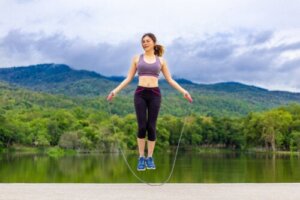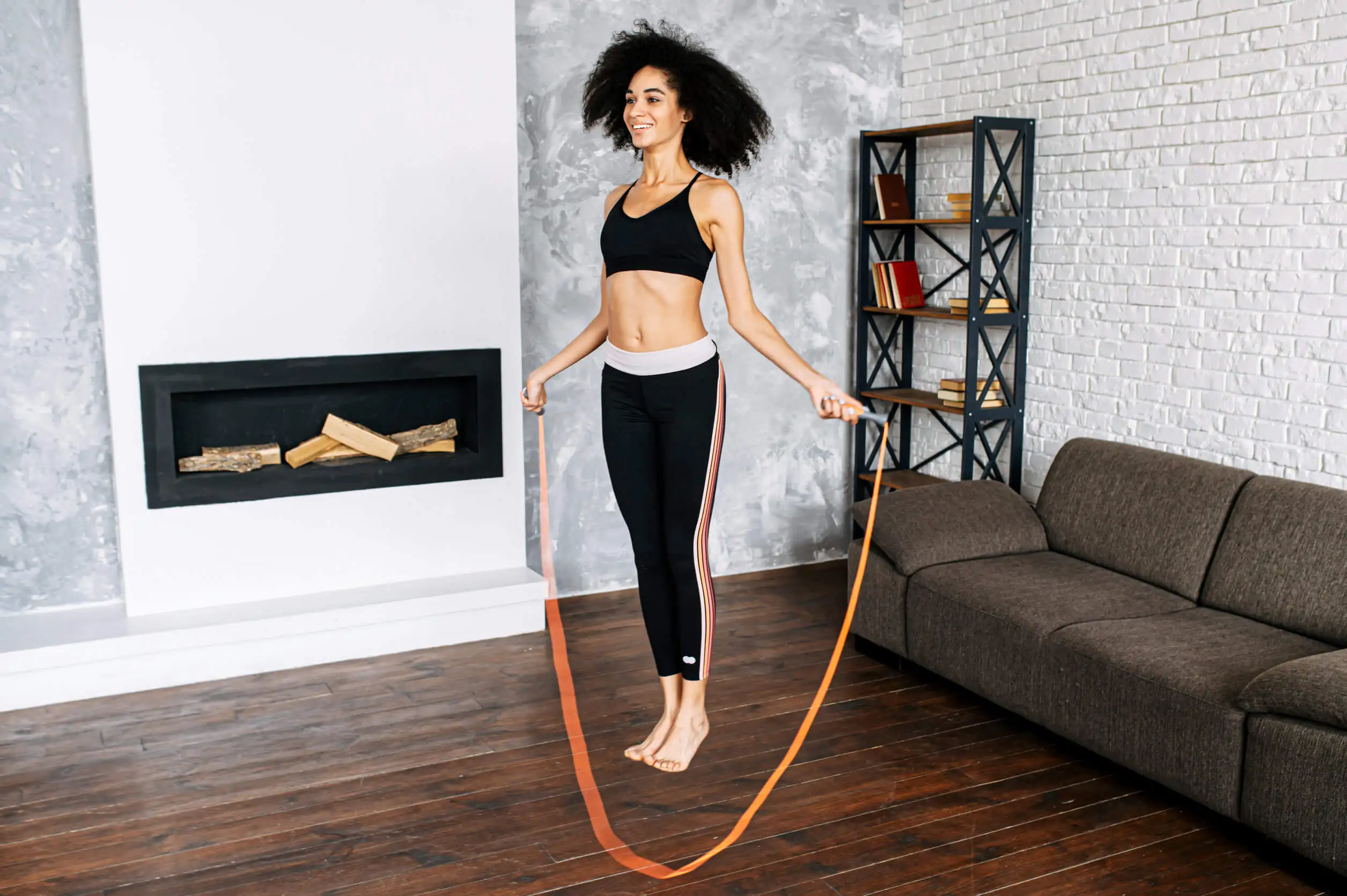8 Common Mistakes when Jumping Rope


Reviewed and approved by the nurse Leidy Mora Molina
Jumping rope is a fast, efficient, and cost-effective workout where you only need one piece of equipment. Any environment is suitable for you to do this exercise, strengthen your coordination, and tone your shoulders, legs, and, above all, your heart. However, you may be making some of these common mistakes when jumping rope if you assume you know how the movement is developed since it’s very simple and may cause some mistakes.
Anyway, the essential thing is that you take care of the details because they will help you avoid any problems. First of all, you should know that you need to control the length of your rope. This is an important element to take into account, because its length must be adjusted to your height: the taller you are, the longer the rope should be.
In addition, you should know the types of ropes that exist for training. This is because each one has its own characteristics adapted to a particular need. Later on, you’ll be able to go deeper into this subject so that you can identify the most common errors when jumping rope and how they may influence your training.
8 common mistakes when jumping rope

In this case, we use the term “mistake” to refer to an action or movement that you don’t perform correctly. Therefore, even though it’s easy to jump rope, it requires that you comply with the jumping technique very well and thus avoid mistakes like those you will see below:
1. Common mistakes when jumping rope: Jumping too high
The best way to work your resistance and raise your speed is that your feet are just a few inches off the ground. It’s not necessary that you try to jump as high as possible when jumping rope. It’s important that you do it comfortably and adapt your jumping to the characteristics of your body.
2. Jumping with an uneven rhythm
The goal is that you jump at the exact moment while establishing a rhythm that you can sustain for the turns you make with your hands and for the jumps. You can identify this common error if, for example, your feet regularly touch the rope when jumping. This means that your feet and arms aren’t moving at the same time. When you master the movement, you can gradually increase your speed.
3. Common mistakes when jumping rope: Poor posture and grip
You may hunch your back and bend your head to let the rope pass, but these are movements to avoid and correct. You need to maintain an upright posture to reduce the risk of back injuries, to facilitate proper breathing, and to help you perform more jumps without stopping.
4. You choose the wrong length
To choose the correct length of the rope, it’s advisable to stand with one foot in the middle of the rope and lift the ends to one side until they almost reach the height of your shoulder. This is the ideal measurement – up to your armpits. It should be no higher or lower than your shoulder.
Remember that not all ropes have the same measurements and, therefore, you should adapt them to yours. A rope that’s too long can tangle you with every turn, and if it’s too short, you can hit your head at every turn and even cause an accident.
5. Common mistakes when jumping rope: Keeping your arms too far apart
The key is to keep your elbows closed and concentrate your movements on your wrists. You must keep your arms close to your body; otherwise, you begin to shorten the length of your rope and it will be more difficult for you to perform the jumps.
We think you may also enjoy reading this article: The 10 Best Speed Exercises to Improve Your Performance
6. Holding the rope ends incorrectly
The ropes have a handle for you to take it at each end, but it’s common for people to hold them from the very ends and not the hand without the necessary forcefulness. Your wrists can be overexerted this way. Make sure to go around each end with all your fingers to wrap your hands around each end to achieve the best grip.

7. Looking down at the ground
If you’re looking down while jumping rope and trying to watch your every move, you’re likely to neglect your jumping technique by being attentive to every detail. In this case, you may be prone to making many different kinds of mistakes.
It’s best that you always orient your vision to the front. You don’t need to watch your hands, arms, feet, or even the rope with your eyes; this adds unnecessary elements to your concentration.
8. Common mistakes when jumping rope: Stiffness when jumping
The routine should be performed as smoothly as possible. After you learn the main pattern of the movement, the safest thing is that you begin to perform it with fluidity and cushion the fall from your hips.
If you keep your body rigid when jumping and resist jumping naturally either due to a lack of practice or a fear of failing, this will waste your time, and this is something to be avoided.
Like this article? You may also like to read: 5 Simple Exercises to Shape Your Figure That You Can Do at Home
Final recommendations to avoid common mistakes when jumping rope and use the correct technique
Keep in mind that the movement that makes the rope rotate starts from the wrists. Your elbows should remain bent close to the sides of your body as you jump. Your forearms and shoulders don’t generate this movement, either; they only complement the main task of your wrists.
You should also not land on the ground with the soles of your feet, but only on the tip of them. Otherwise, you can damage your knees. Your goal should be to keep your knees bent and avoid stiffness and any kind of injury.
Finally, we advise you to maintain a good posture when practicing and thus avoid many of the most common mistakes when jumping rope.
As the exercise wears on, you may begin to slouch forward. Slouching is a normal response, but it’s important that you try to keep your back straight. Imagine that with each jump, you’re pushing into the floor with your feet while your head goes up towards the ceiling as if a string is pulling on it; this is the best axial elongation and will help you jump rope correctly.
All cited sources were thoroughly reviewed by our team to ensure their quality, reliability, currency, and validity. The bibliography of this article was considered reliable and of academic or scientific accuracy.
- Canales, S. (2017). Influencia del salto de cuerda en la coordinación, velocidad, agilidad y resistencia cardiorrespiratoria. Instituto Politécnico de Leiria. https://iconline.ipleiria.pt/handle/10400.8/3012
- McDonnell, J., Zwetsloot, K. A., Houmard, J., & DeVita, P. (2019). Skipping has lower knee joint contact forces and higher metabolic cost compared to running. Gait & Posture, 70, 414–419. https://doi.org/10.1016/j.gaitpost.2019.03.028
This text is provided for informational purposes only and does not replace consultation with a professional. If in doubt, consult your specialist.








